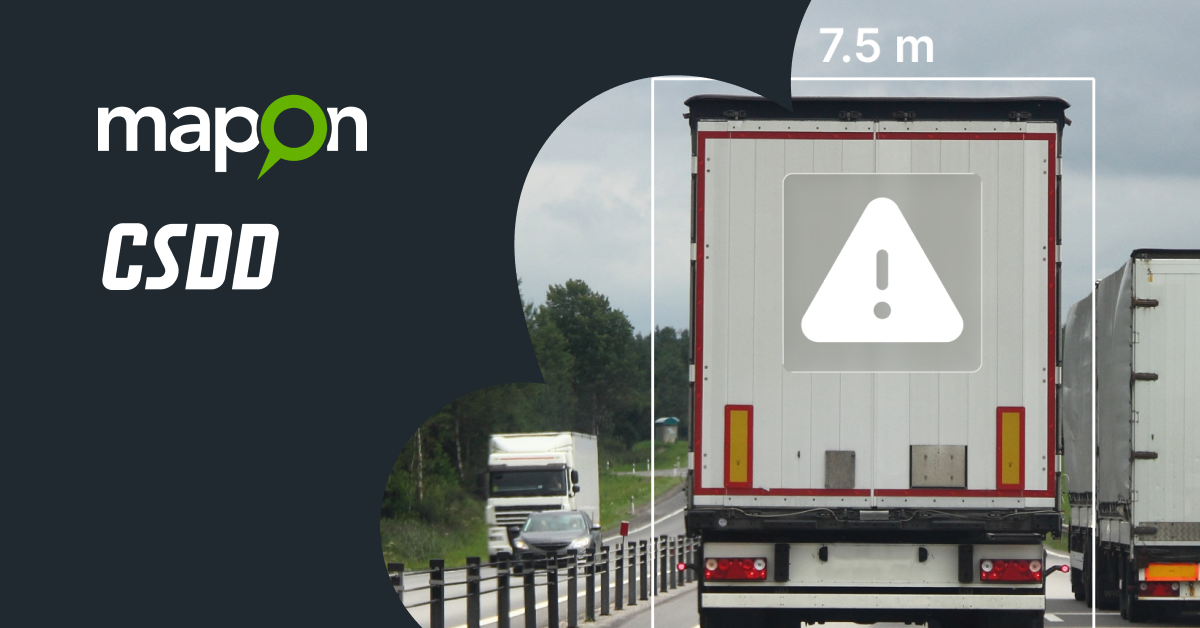Fleet safety is changing fast, and Northern Europe is one of the most interesting places to see that change in action.
In Latvia, the Road Traffic Safety Directorate (CSDD) and Mapon have joined forces to explore how technology can move us from reacting to accidents to preventing them altogether.
The CSDD and Mapon webinar tackled a question every transport manager and safety expert should be asking:
Can technology not just record accidents — but stop them from happening in the first place?
A new kind of thinking for road safety
CSDD’s safety expert Oskars Irbītis has spent years studying accidents to find out not just how they happen, but why. His experience in forensics, insurance, and vehicle security has led to one conclusion:
Real road safety doesn’t depend on one thing. It’s the combination of the driver, the vehicle, the infrastructure, and the systems that connect them.
For a long time, people focused on the first three. But the fourth, namely, technology, is what’s starting to change the equation.
All kinds of sensors, as well as fleet cameras, are now part of the road safety ecosystem.
They don’t just help us react faster after something happens; they give us a chance to avoid the problem in the first place.
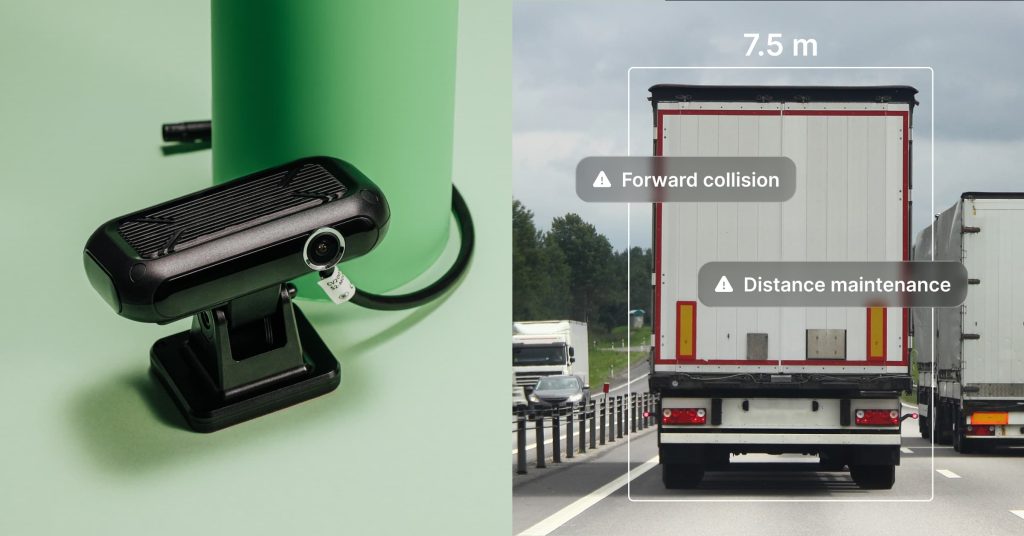
From Accident Reports to Prevention Tools
In fleet management, prevention is where technology shines. Mapon’s Product Manager for Safety and Cameras put it simply:
“Traditional telematics, such as GPS monitoring, tells you what happened. Cameras show you why it happened.”
That small shift from what to why makes all the difference. Most risky situations never make it to the news. A driver fighting fatigue on a long night shift, a van tailgating in city traffic, or a truck cutting a corner too tight – these moments rarely end in an accident, but they could have. And without visibility, they go unnoticed.
When cameras and telematics work together, companies can spot these red flags before they escalate. A quick alert or coaching moment can prevent a future crash. That’s how you turn safety from a reaction into a routine.
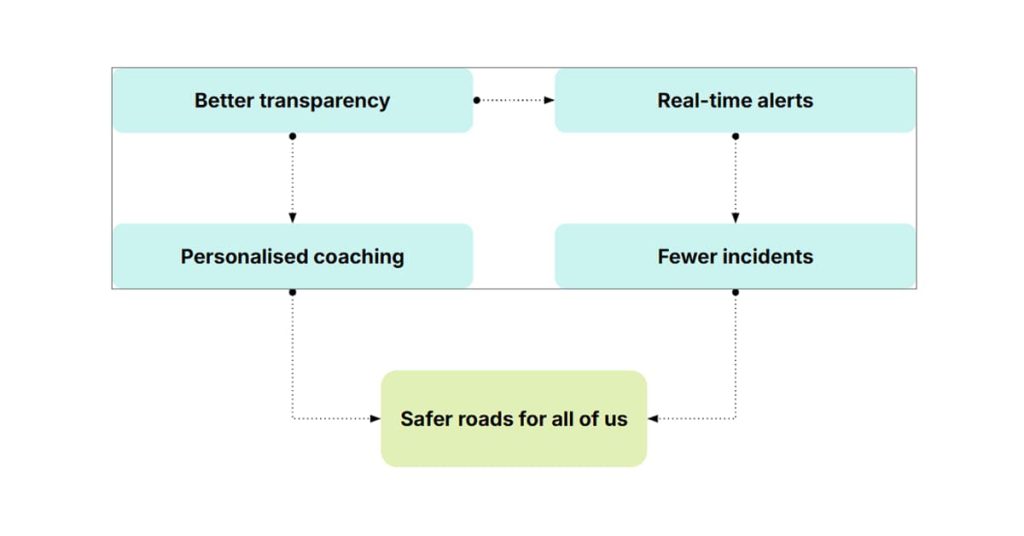
Seeing what’s really happening on the road
Modern fleet cameras are far from the old “dashcam for evidence” setup.
They record multiple angles – front, sides, rear, and cabin – and combine that footage with data on speed, braking, acceleration, and even driver fatigue.
If the system detects a risk – say, the driver gets too close to another vehicle or shows signs of drowsiness – it can give an instant warning. And if something does happen, the footage tells the real story.
That transparency helps everyone. Drivers understand what went wrong, managers can focus on coaching, and companies protect their reputation and resources.
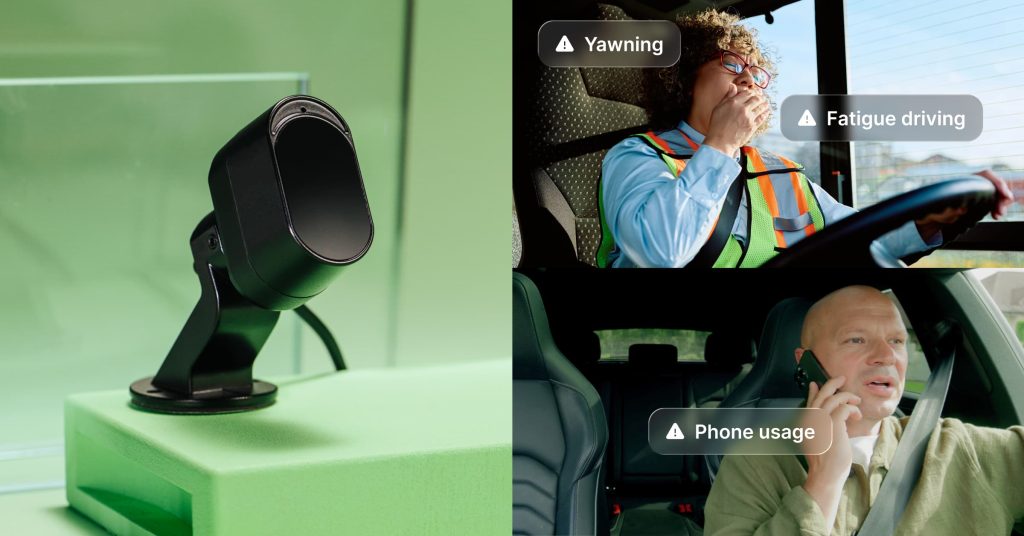
How tech makes a difference
The best part of these tools is how practical they are. Here’s what it looks like in action:
- Fatigue detection: when the system spots yawning or sleepy eyes during night shifts, dispatchers can call to check in or adjust schedules.
- Distance warnings: if the same risky spots keep triggering alerts, it’s a sign to rethink the route or timing.
- Seatbelt reminders: if drivers repeatedly skip buckling up, a quick automated nudge can fix the habit before it turns into trouble.
- Multi-camera analysis: reviewing side and rear footage helps train safer lane changes and cyclist awareness.
These are small, everyday interventions. But over time, they create measurable results: fewer incidents, faster investigations, and drivers who feel supported rather than monitored.
How to turn data into action
Technology alone doesn’t improve safety. People do. That’s why Mapon encourages companies to start small and focus on behaviour, not surveillance.
Here’s what works:
- Set clear metrics. For example, track the number of risky events per 1,000 km or how quickly drivers receive feedback.
- Review data regularly. Even a 15-minute weekly session helps keep teams aware and engaged.
- Fine-tune sensitivity. Not every fleet drives the same routes — tailor alerts to the context.
- Involve drivers. Explain how data helps them, not just the company. Celebrate good habits, instead of only pointing out mistakes.
- Test, learn, expand. Start with one or two focus areas, see what works, and grow from there.
When drivers trust the process, technology becomes a partner, not a watchdog.
Safety and privacy can coexist
When it comes to cameras and monitoring, it’s fair to ask: what about privacy?
CSDD and Mapon are clear – every system must meet GDPR and local data protection standards.
That means:
- Only short clips tied to safety events are stored.
- Videos are automatically deleted after 30 days unless flagged.
- Access is limited to authorised users.
- Everything is encrypted and stored securely.
- Drivers always know what’s being recorded and why.
This transparency builds credibility and trust, which, in the long run, makes safety initiatives sustainable.
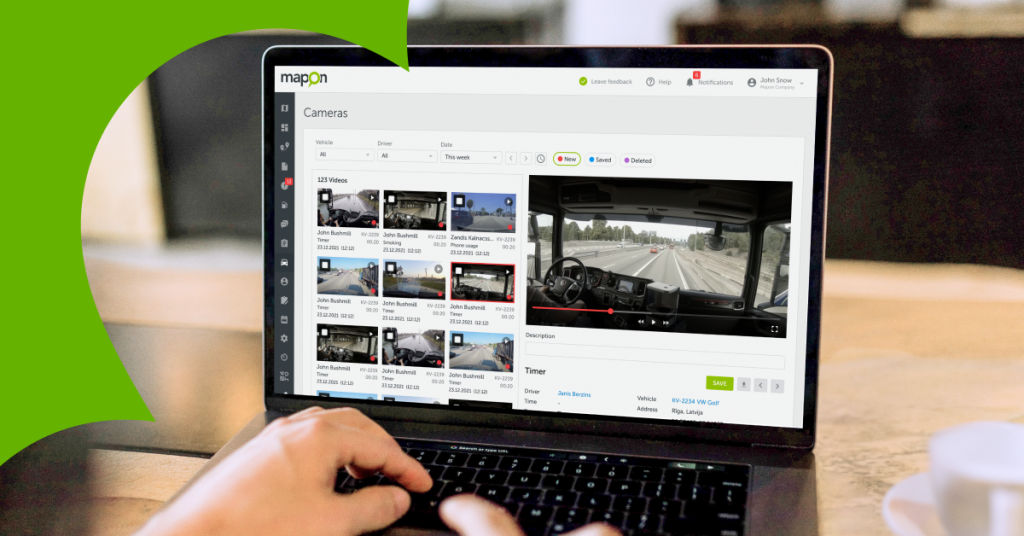
What’s next for fleets and safety technology
The future of road safety will be data-driven. We’ll see new legislation adapting to modern fleet monitoring, AI-driven insights predicting risks, and even deeper integration between vehicles, infrastructure, and management systems.
But progress won’t just come from innovation; it will come from how we use it.
When companies treat data as a tool for learning rather than punishment, safety becomes part of their culture.
Safety starts before the accident
The best safety improvements happen long before an accident does. They come from insight, habit, and small corrections made in time.
Technology helps with all three by showing what we’d otherwise miss. When a camera alert prevents a tired driver from drifting off, or a data review reveals a risky pattern, that’s one more tragedy avoided.
CSDD and Mapon’s message is clear: real safety is shared safety. It’s built when technology supports drivers and when companies see prevention not as an expense, but as a way to protect people, reputation, and business.
Want your fleet to stay safe on the road? Contact us and our team will help you choose solutions that fit your fleet and your drivers.

